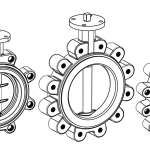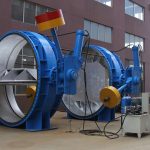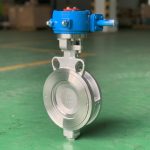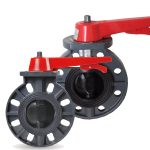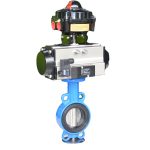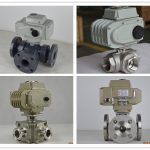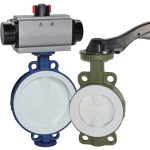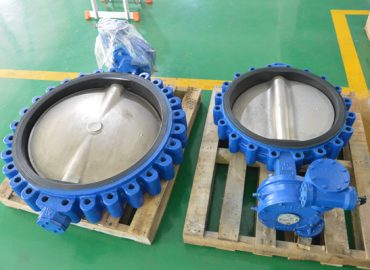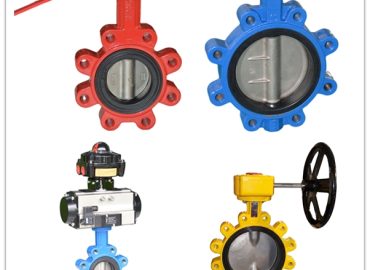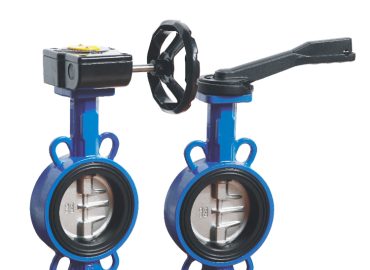Butterfly valves play a crucial role in controlling the flow of fluids and gases in various industrial applications. As such, selecting the right valve is essential to ensure optimal system performance and longevity. A comprehensive butterfly valve specification sheet serves as a valuable tool to help engineers, technicians, and procurement professionals make informed decisions when choosing the best valve for a given application. This blog post will explore the critical components that should be included in a butterfly valve specification sheet, providing guidance on valve types, materials, sizing, actuation, performance data, and more to streamline the decision-making process and improve overall system efficiency.
Introduction
A butterfly valve specification sheet is a vital document that provides essential information required to select the most suitable butterfly valve for a specific application. This comprehensive document should include details on the valve type and design, such as whether it’s a concentric, double-offset, or triple-offset butterfly valve, and its construction style (wafer, lug, or flanged). Additionally, the specification sheet should outline the size and pressure ratings, ensuring compatibility with the intended application. Material selection is another crucial aspect, as it directly affects the valve’s performance and durability. The specification sheet should provide information on materials used for the valve body, disc, stem, and seat, taking into account factors like corrosion resistance, chemical compatibility, and temperature range. Actuator type and available control options must also be detailed, including manual, electric, pneumatic, or hydraulic actuators, along with any accessories or optional features to enhance valve performance. Furthermore, the specification sheet should outline performance data, such as flow coefficients (Cv), pressure drop information, and allowable leakage rates, ensuring the valve meets the desired performance criteria. Compliance with industry standards and certifications, like API, ASME, or ISO, is another critical factor to consider. Lastly, the specification sheet should provide guidance on proper installation and maintenance practices, ensuring optimal valve performance and longevity. In summary, a well-prepared butterfly valve specification sheet is an invaluable tool that enables engineers, technicians, and procurement professionals to make informed decisions, ultimately leading to improved system efficiency and reliability.
Brief overview of butterfly valves and their importance in fluid or gas flow systems
Butterfly valves are essential components in fluid or gas flow systems, serving as a reliable and cost-effective solution for regulating and isolating the flow of various media. These versatile valves consist of a circular disc mounted on a rotating stem, which, when rotated, pivots within the valve body to control the flow. With their compact design, ease of operation, and minimal pressure drop, butterfly valves are widely utilized across numerous industries, including water treatment, chemical processing, power generation, and HVAC systems. Their ability to handle a wide range of pressures, temperatures, and media types make them indispensable in maintaining efficient and safe operations. By providing precise flow control and reducing the risk of leaks, butterfly valves contribute significantly to the overall performance and reliability of fluid or gas flow systems.
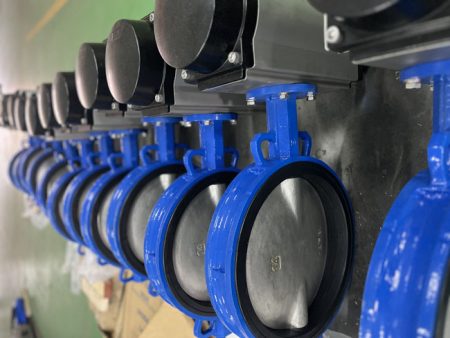
The significance of a well-prepared specification sheet for butterfly valve
A well-prepared specification sheet for butterfly valves holds significant importance in ensuring the optimal performance and reliability of fluid or gas flow systems. This comprehensive document serves as a valuable reference, providing engineers, technicians, and procurement professionals with essential information to make informed decisions when selecting the most suitable butterfly valve for their specific application. By detailing crucial aspects such as valve type, design, materials, sizing, actuation, performance data, and compliance with industry standards, a thorough specification sheet minimizes the risk of incorrect valve selection, which can lead to reduced system efficiency, increased maintenance costs, and potential safety hazards. Furthermore, a detailed specification sheet facilitates clear communication between valve manufacturers and end-users, ensuring that the chosen valve meets all the necessary requirements and expectations. Ultimately, the significance of a well-prepared butterfly valve specification sheet lies in its ability to streamline the decision-making process, promote system efficiency, and enhance overall operational reliability.
Valve Type and Design
Valve type and design are critical aspects to consider when selecting a butterfly valve for a specific application, as they directly impact the valve’s performance, durability, and compatibility with the system requirements. There are three primary types of butterfly valves: concentric, double-offset, and triple-offset. Concentric butterfly valves, also known as resilient-seated valves, feature a disc that is centered within the valve body and seat, making them suitable for low-pressure applications with minimal temperature fluctuations. On the other hand, double-offset and triple-offset butterfly valves, often referred to as high-performance or metal-seated valves, have a disc and stem that are positioned off-center, allowing for better sealing capabilities, reduced wear, and improved performance in high-pressure and high-temperature applications. In addition to the valve type, the design features of a butterfly valve, such as wafer, lug, or flanged styles, also play a crucial role in determining its suitability for a particular application. Wafer-style butterfly valves are sandwiched between two flanges and are compact, lightweight, and cost-effective, making them ideal for space-constrained installations. Lug-style butterfly valves, meanwhile, offer more robust connections and can be used in dead-end service, providing greater versatility in various piping configurations. Flanged butterfly valves are designed with flanges on either side of the valve body, allowing for easy installation and removal, and are typically used where higher pressure ratings and more secure connections are required. By carefully considering the valve type and design, engineers and technicians can ensure the chosen butterfly valve meets the specific needs of their fluid or gas flow system, ultimately optimizing performance, reliability, and overall system efficiency.
Description of the specific butterfly valve type (e.g., concentric, double-offset, triple-offset)
Butterfly valve are available in three primary types, each designed to cater to specific application requirements and operating conditions: concentric, double-offset, and triple-offset. Concentric butterfly valves, also known as resilient-seated valves, feature a disc that is centered within the valve body and seat. These valves are an excellent choice for low-pressure applications with minimal temperature fluctuations, offering a simple design and cost-effective solution. Double-offset butterfly valves, often referred to as high-performance valves, have the disc and stem slightly offset from the centerline, which reduces friction between the disc and seat during operation. This design enhances sealing capabilities and extends the valve’s life, making it suitable for higher pressure and temperature applications. Triple-offset butterfly valves take this concept a step further, with the disc and stem being even more offset and the seat geometry angled to create a cone-shaped sealing surface. This design virtually eliminates friction and provides exceptional sealing performance, making triple-offset butterfly valves ideal for critical applications involving high pressures, temperatures, or corrosive media. By understanding the unique characteristics and advantages of each butterfly valve type, engineers and technicians can select the most appropriate valve for their specific fluid or gas flow system requirements.
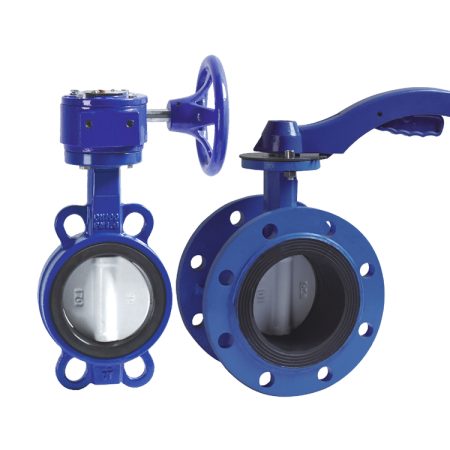
Details on the design features (e.g., wafer, lug, flanged)
The design features of butterfly valves, such as wafer, lug, and flanged styles, play a crucial role in determining their suitability for a particular application, as they impact the valve’s installation, maintenance, and overall performance. Wafer-style butterfly valves are the most compact and lightweight option, designed to be sandwiched between two flanges in the piping system. This style is cost-effective and ideal for space-constrained installations, but may not be suitable for applications requiring higher pressure ratings or more secure connections. Lug-style butterfly valves offer a more robust connection, featuring threaded inserts that allow each side of the valve to be independently connected or disconnected from the pipeline. This design provides greater versatility in various piping configurations and enables dead-end service, making it a popular choice for applications requiring easy maintenance and flexibility. Flanged butterfly valves, on the other hand, are designed with flanges on either side of the valve body, providing a secure connection to the adjacent pipe flanges. These valves are typically used in applications where higher pressure ratings and more reliable connections are required, as they can accommodate various bolting patterns and gasket types. While flanged valves may be bulkier and more expensive than their wafer and lug counterparts, they offer easier installation and removal, contributing to reduced downtime and maintenance costs. By carefully considering the design features of butterfly valves, engineers and technicians can select the most appropriate style for their specific fluid or gas flow system requirements, ensuring optimal performance and reliability.
Size and Pressure Ratings
Size and pressure ratings are essential factors to consider when selecting a butterfly valve for a specific application, as they directly impact the valve’s performance, compatibility with the system requirements, and overall reliability. The valve size, typically expressed in terms of nominal pipe size (NPS) or diameter (DN), should be chosen based on the desired flow rate, taking into account the pressure drop and fluid velocity through the valve. Selecting an appropriately sized butterfly valve ensures that it can efficiently handle the required flow rate while minimizing energy losses, wear, and noise generation.
Pressure ratings, on the other hand, indicate the maximum pressure that a butterfly valve can safely withstand under normal operating conditions. These ratings are often defined by industry standards such as ANSI or API and are expressed in terms of pressure classes or pound ratings (e.g., Class 150, Class 300, or PN16). It is crucial to select a butterfly valve with a pressure rating that matches or exceeds the system’s maximum operating pressure, as an inadequately rated valve may pose safety risks, reduce system efficiency, and result in premature failure.
When considering size and pressure ratings, it is also important to account for factors such as temperature variations, potential pressure surges, and the nature of the fluid or gas being handled (e.g., corrosive, abrasive, or viscous). By carefully evaluating these factors and selecting the appropriate size and pressure ratings for a butterfly valve, engineers and technicians can ensure optimal performance, enhance system efficiency, and maintain the overall integrity and reliability of their fluid or gas flow systems.
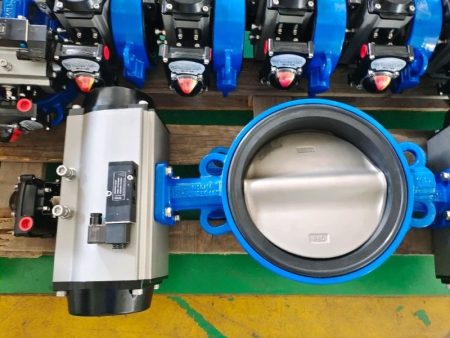
Valve size (diameter) and how it relates to the application
Valve size, commonly expressed in terms of diameter or nominal pipe size (NPS), plays a crucial role in determining the suitability of a butterfly valve for a specific application. The size of the valve directly impacts its capacity to handle the required flow rate, as well as the pressure drop and fluid velocity through the valve. In order to select the appropriate valve size, engineers and technicians must consider the desired flow rate, the nature of the fluid or gas being handled, and the operating conditions of the system. An adequately sized butterfly valve will ensure efficient flow control while minimizing energy losses, wear, and noise generation. Conversely, an undersized valve may impede flow and cause excessive pressure drop, leading to reduced system efficiency and potential equipment damage. On the other hand, an oversized valve can result in poor flow control, increased costs, and wasted space. By carefully evaluating the application requirements and selecting the right valve size, professionals can optimize the performance, reliability, and overall efficiency of their fluid or gas flow systems.
Pressure ratings for the valve, including maximum operating pressure
Pressure ratings for butterfly valves are an essential factor to consider, as they indicate the maximum operating pressure that a valve can safely withstand under normal conditions. These ratings are typically defined by industry standards such as ANSI or API and are expressed in terms of pressure classes or pound ratings (e.g., Class 150, Class 300, or PN16). When selecting a butterfly valve for a specific application, it is crucial to choose one with a pressure rating that matches or exceeds the system’s maximum operating pressure. This ensures that the valve can handle the pressure demands of the system without posing safety risks or compromising efficiency. An inadequately rated valve may result in premature failure, leaks, or even catastrophic damage to the system, leading to increased maintenance costs, downtime, and potential hazards. By carefully evaluating the system’s operating conditions and selecting a butterfly valve with an appropriate pressure rating, engineers and technicians can maintain the integrity, reliability, and overall performance of their fluid or gas flow systems.
Body Material
The choice of body material for a butterfly valve is a critical consideration, as it directly influences the valve’s durability, corrosion resistance, and compatibility with the fluid or gas being handled. Various factors such as temperature, pressure, and chemical composition of the media must be taken into account when selecting the appropriate body material. Common materials used in butterfly valve construction include cast iron, ductile iron, carbon steel, stainless steel, and more specialized alloys like Hastelloy or Monel. Cast iron and ductile iron are popular choices for low to moderate pressure applications due to their cost-effectiveness, ease of machinability, and good mechanical properties. However, they may not be suitable for highly corrosive or high-temperature environments. Carbon steel offers higher strength and durability compared to cast iron, making it suitable for more demanding applications. Stainless steel, on the other hand, provides excellent corrosion resistance, making it an ideal choice for handling aggressive fluids or gases, as well as high-temperature and high-pressure applications. Specialized alloys like Hastelloy or Monel offer superior performance in extreme conditions, such as highly corrosive or high-temperature environments, but they can be significantly more expensive than other materials. By carefully evaluating the operating conditions and compatibility requirements of the specific application, engineers and technicians can select the most appropriate body material for a butterfly valve, ensuring optimal performance, reliability, and longevity of the valve and the overall fluid or gas flow system.
Material selection based on application requirements and compatibility with media
Material selection for butterfly valves is a critical aspect that must be based on application requirements and compatibility with the media being handled. The chosen material should not only withstand the operating conditions, such as pressure and temperature, but also provide adequate resistance to corrosion, wear, and chemical attack from the fluid or gas. To ensure optimal performance and longevity, engineers and technicians must carefully evaluate factors like the chemical composition, temperature range, and potential contaminants present in the media. Common valve materials include cast iron, ductile iron, carbon steel, stainless steel, and specialized alloys like Hastelloy or Monel. For instance, cast iron and ductile iron are suitable for low to moderate pressure applications involving non-corrosive media, while stainless steel is ideal for corrosive environments, high temperatures, and high pressures. Specialized alloys like Hastelloy or Monel may be necessary for extreme conditions, such as highly corrosive or high-temperature applications. By thoroughly assessing the application requirements and media compatibility, professionals can select the most appropriate material for their butterfly valve, ensuring reliable performance, extended service life, and overall system integrity.
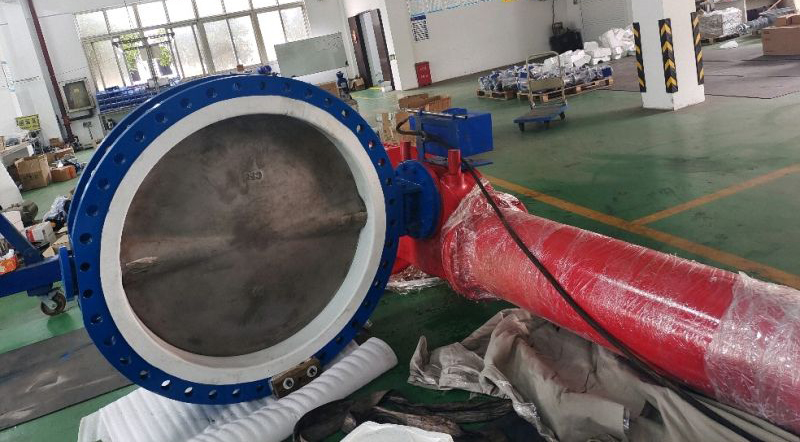
Common materials used in butterfly valves (e.g., cast iron, stainless steel, PVC)
Butterfly valves are manufactured using a variety of materials to meet the diverse requirements of various applications, ranging from low-pressure water systems to high-pressure chemical processing plants. Common materials used in butterfly valve construction include cast iron, stainless steel, and PVC. Cast iron is a popular choice due to its cost-effectiveness, durability, and ease of machinability, making it suitable for low to moderate pressure applications involving non-corrosive media. Stainless steel, on the other hand, offers excellent corrosion resistance, mechanical strength, and resistance to high temperatures, making it an ideal option for more demanding applications, such as those involving aggressive fluids, high pressures, or elevated temperatures. PVC (polyvinyl chloride) is a lightweight, corrosion-resistant, and cost-effective material commonly used for butterfly valves in low-pressure water systems, wastewater treatment, and certain chemical applications where metal valves may be susceptible to corrosion. Each material offers unique advantages and limitations, and the selection of the appropriate material should be based on factors such as application requirements, media compatibility, pressure ratings, and temperature ranges. By carefully considering these factors, engineers and technicians can select the most suitable material for their butterfly valve, ensuring optimal performance, reliability, and longevity of the valve and the overall fluid or gas flow system.
Seat Material and Design
The seat material and design of a butterfly valve play a critical role in determining its sealing performance, durability, and compatibility with the fluid or gas being handled. The seat material should be chosen based on factors such as operating temperature, pressure, and chemical composition of the media, while the seat design should ensure efficient sealing and minimal leakage over the valve’s service life. Common seat materials include elastomers like EPDM (ethylene propylene diene monomer), NBR (nitrile butadiene rubber), and FKM (fluoroelastomer), as well as more specialized materials like PTFE (polytetrafluoroethylene) for high-temperature or chemically aggressive applications.
Elastomeric seats, such as EPDM, NBR, and FKM, offer excellent flexibility, resilience, and sealing capabilities, making them suitable for a wide range of applications. EPDM is commonly used in water, steam, and certain chemical applications due to its good resistance to heat, ozone, and weathering. NBR is an ideal choice for oil, gas, and petroleum-based fluids, thanks to its excellent resistance to oils and fuels. FKM is suitable for high-temperature applications and offers superior resistance to chemicals, oils, and extreme environmental conditions.
PTFE seats, on the other hand, are highly resistant to chemicals, heat, and wear, making them an ideal choice for corrosive or high-temperature applications where elastomeric seats may not perform well. PTFE also has a low coefficient of friction, which reduces torque requirements and enhances the valve’s overall performance.
The seat design plays a vital role in ensuring proper sealing and minimizing leakage. Common seat designs include concentric, double-offset, and triple-offset configurations. Concentric designs provide reliable sealing for low to moderate pressure applications, while double-offset and triple-offset designs offer improved sealing performance and reduced wear in high-pressure or high-temperature applications.
By carefully considering the application requirements, media compatibility, and operating conditions, engineers and technicians can select the most appropriate seat material and design for a butterfly valve, ensuring optimal sealing performance, durability, and overall reliability of the fluid or gas flow system.
Importance of seat material in sealing and performance
The seat material of a butterfly valve plays a pivotal role in determining its sealing performance and overall functionality within a fluid or gas flow system. The chosen material should possess essential properties such as chemical resistance, temperature tolerance, flexibility, and resilience to ensure reliable sealing and minimal leakage throughout the valve’s operational life. Selecting the appropriate seat material is crucial for maintaining compatibility with the media being handled and guaranteeing optimal performance under specific operating conditions. Commonly used materials like EPDM, NBR, FKM, and PTFE each offer distinct advantages and limitations. A well-suited seat material enhances the valve’s sealing capabilities, contributing to the longevity and reliability of the entire fluid or gas flow system. By carefully evaluating application requirements, media compatibility, and operating conditions, engineers and technicians can choose the most appropriate seat material for their butterfly valve, ultimately achieving superior performance, reduced maintenance costs, and an extended service life.

Common seat materials (e.g., EPDM, PTFE, NBR) and their applications
Common seat materials for butterfly valves, such as EPDM, PTFE, and NBR, each offer unique properties that cater to specific applications and media compatibility. EPDM (ethylene propylene diene monomer) is a versatile elastomer known for its excellent resistance to heat, ozone, and weathering, making it suitable for water, steam, and certain chemical applications. PTFE (polytetrafluoroethylene), also known as Teflon, is a highly chemically resistant material with a low coefficient of friction and exceptional heat resistance, making it an ideal choice for corrosive or high-temperature applications where elastomeric seats may not perform well. NBR (nitrile butadiene rubber) is particularly effective in oil, gas, and petroleum-based fluid systems due to its outstanding resistance to oils and fuels. When selecting a seat material, it’s essential to consider factors such as media compatibility, operating temperature and pressure, and the specific requirements of the application. By carefully choosing the appropriate seat material, engineers and technicians can optimize the performance, reliability, and longevity of butterfly valves and the overall fluid or gas flow system.
Seat design options (e.g., bonded, replaceable)
Seat design options for butterfly valves, such as bonded and replaceable seats, offer unique advantages in terms of maintenance, sealing performance, and overall valve life. Bonded seats are directly vulcanized or molded onto the valve body, creating a secure connection that eliminates the need for additional fasteners or seals. This design provides excellent sealing performance, reduced leakage, and increased resistance to wear and tear. However, bonded seats may present challenges when it comes to maintenance or replacement, as the entire valve assembly often needs to be removed and replaced in case of seat damage or wear.
Replaceable seats, on the other hand, are designed to be easily removed and replaced without disassembling the entire valve. This design allows for more straightforward maintenance and reduces downtime, as worn or damaged seats can be quickly replaced with minimal disruption to the fluid or gas flow system. While replaceable seats may require additional components, such as fasteners or seals, to ensure proper sealing performance, advancements in seat design and materials have significantly improved their reliability and longevity.
When selecting a seat design for a butterfly valve, it’s essential to consider factors such as ease of maintenance, sealing performance, application requirements, and overall valve life. By carefully evaluating these factors, engineers and technicians can choose the most suitable seat design, optimizing the performance, reliability, and serviceability of butterfly valves and the entire fluid or gas flow system.
Disc Material and Coatings
Disc material and coatings play a crucial role in the performance, durability, and corrosion resistance of butterfly valves, ensuring their compatibility with various media and operating conditions. The choice of disc material should be based on factors such as the chemical composition of the media, operating temperature and pressure, and the specific requirements of the application. Common disc materials include cast iron, stainless steel, and bronze, each offering unique benefits and limitations. Cast iron is an economical option that provides good strength and durability, making it suitable for low to moderate pressure applications involving non-corrosive media. Stainless steel, on the other hand, offers excellent corrosion resistance, mechanical strength, and temperature tolerance, making it ideal for more demanding applications, such as those involving aggressive fluids or high pressures.
In addition to selecting the appropriate disc material, applying protective coatings can further enhance the valve’s performance and extend its service life. Coatings are often used to improve the disc’s corrosion resistance, wear resistance, and overall durability. Common coatings include epoxy, nickel, and Teflon, each providing distinct advantages depending on the application. Epoxy coatings offer excellent corrosion protection, chemical resistance, and adhesion, making them suitable for water and wastewater applications. Nickel coatings provide an additional layer of corrosion resistance and wear protection, particularly in environments where abrasion or erosion may occur. Teflon coatings, made from PTFE (polytetrafluoroethylene), are known for their exceptional chemical resistance, low friction, and non-stick properties, making them ideal for corrosive or high-temperature applications.
By carefully considering the application requirements, media compatibility, and operating conditions, engineers and technicians can select the most appropriate disc material and coatings for butterfly valves. This ensures optimal performance, reliability, and longevity of the valve and the overall fluid or gas flow system, ultimately reducing maintenance costs and minimizing downtime due to wear or corrosion-related issues.
Disc material selection based on application requirements
Disc material selection for lug butterfly valves is a crucial aspect that impacts the valve’s performance, durability, and compatibility with the intended application. When choosing the appropriate disc material, factors such as chemical composition of the media, operating temperature and pressure, and specific application requirements must be taken into account. For instance, cast iron is an affordable option that offers good strength and durability, making it suitable for low to moderate pressure applications with non-corrosive media. Stainless steel, on the other hand, provides excellent corrosion resistance, mechanical strength, and temperature tolerance, making it ideal for demanding applications involving aggressive fluids or high pressures. In some cases, bronze may be chosen for its superior corrosion resistance in applications where seawater or other corrosive media are present. By carefully evaluating these factors and selecting the most suitable disc material, engineers and technicians can optimize the performance, reliability, and service life of butterfly valves, ensuring their seamless integration into the overall fluid or gas flow system.
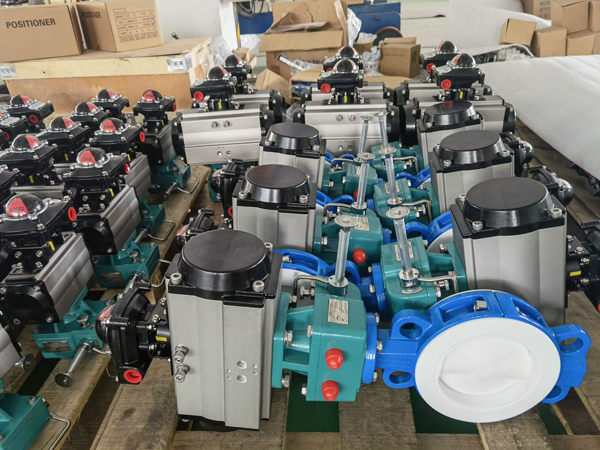
Surface coatings for enhanced performance and durability (e.g., nylon, PFA)
Surface coatings play a significant role in enhancing the performance and durability of butterfly valve components, such as the disc and body, by providing added protection against wear, corrosion, and chemical attack. Materials like nylon and PFA (perfluoroalkoxy) are commonly used as coatings to improve the valve’s resistance to harsh operating environments and extend its service life. Nylon coatings offer excellent wear resistance, impact strength, and corrosion protection, making them suitable for applications involving abrasive or corrosive media. Additionally, nylon’s inherent low friction properties contribute to reduced torque requirements and improved valve operation. PFA, on the other hand, is a high-performance fluoropolymer that provides exceptional chemical resistance, temperature stability, and non-stick properties. This makes PFA coatings ideal for applications involving highly corrosive or high-temperature media where traditional materials may not perform well. By incorporating surface coatings like nylon or PFA, engineers and technicians can significantly improve the performance, reliability, and longevity of butterfly valves, ultimately reducing maintenance costs and minimizing downtime due to wear or corrosion-related issues.
Actuator Type
The actuator type is an essential component of a butterfly valve, responsible for converting energy into mechanical motion to control the valve’s opening and closing. The choice of actuator type is critical in determining the valve’s performance, response time, and overall suitability for specific applications. Common actuator types include manual actuator, electric actuator, pneumatic actuator, and hydraulic actuators, each offering distinct advantages and limitations. Manual actuators, such as handwheels or levers, are simple and cost-effective solutions for applications that do not require frequent valve adjustments or precise flow control. They are easy to install and maintain but may not be suitable for large-scale or remote operations where automation is necessary.
Electric actuators use electrical motors to control the valve’s position, providing precise and efficient operation. They are ideal for applications that require remote control, automation, or integration with other control systems. Electric actuators can be easily adjusted to accommodate various operating parameters and offer a high degree of accuracy and repeatability. However, they may not be suitable for applications involving explosive or flammable environments due to their potential for generating sparks.Pneumatic actuators rely on compressed air to generate linear or rotary motion, making them a popular choice for process industries where compressed air is readily available. They offer rapid response times, high torque output, and a relatively simple design, making them suitable for a wide range of applications. Pneumatic actuators are also inherently safe in hazardous environments, as they do not generate sparks or heat. However, they may require additional components like air filters, regulators, and lubricators to ensure optimal performance and longevity.
Hydraulic actuators utilize pressurized fluid to produce motion, offering high force output and smooth, precise control. They are well-suited for heavy-duty applications or those involving high pressures and large valve sizes. Hydraulic actuators are generally more complex and expensive than pneumatic actuators but provide superior performance under demanding conditions.When selecting an actuator type for a butterfly valve, it’s essential to consider factors such as application requirements, available power sources, response time, and environmental conditions. By carefully evaluating these factors and choosing the appropriate actuator type, engineers and technicians can optimize the performance, reliability, and efficiency of butterfly valves, ensuring seamless integration into the overall fluid or gas flow system.
Overview of the different actuator types (e.g., manual, electric, pneumatic, hydraulic)
Different actuator types, such as manual, electric, pneumatic, and hydraulic, are used to control the opening and closing of butterfly valves based on the specific requirements of a fluid or gas flow system. Manual actuators, including handwheels and levers, are simple and cost-effective options for applications that do not necessitate frequent valve adjustments or precise flow control. Electric actuators utilize electrical motors to provide accurate and efficient operation, making them ideal for remote control, automation, or integration with other control systems. Pneumatic actuators rely on compressed air to generate motion, offering rapid response times, high torque output, and suitability for a wide range of applications, including hazardous environments. Hydraulic actuators use pressurized fluid to produce smooth, precise control and high force output, making them well-suited for heavy-duty applications or those involving high pressures and large valve sizes. When selecting an actuator type for a butterfly valve, it’s essential to consider factors such as application requirements, available power sources, response time, and environmental conditions to ensure optimal performance, reliability, and efficiency of the valve within the system.
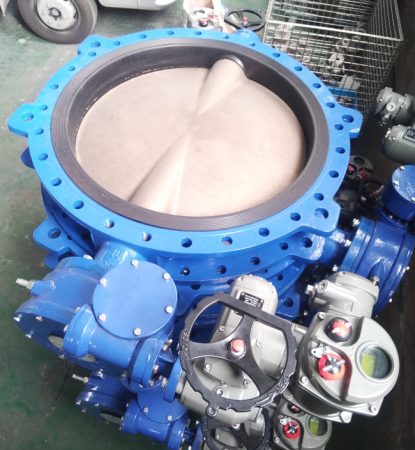
Factors to consider when selecting an actuator
When selecting an actuator for a butterfly valve, it’s essential to consider several factors to ensure optimal performance, reliability, and efficiency within the fluid or gas flow system. First, evaluate the application requirements, including the desired level of control, frequency of valve adjustments, and the need for automation or integration with other control systems. Next, assess the available power sources, such as electricity, compressed air, or hydraulic fluid, and determine compatibility with the chosen actuator type. Response time is another crucial factor, as it impacts the valve’s ability to quickly and accurately adjust to changes in flow conditions. Environmental considerations, such as temperature, humidity, and potential exposure to corrosive or explosive atmospheres, must also be taken into account, as they can influence the actuator’s material and design choices. Finally, consider factors like maintenance requirements, ease of installation, and overall cost to ensure that the selected actuator aligns with budget constraints and long-term operational goals. By carefully weighing these factors, engineers and technicians can select the most appropriate actuator for their butterfly valve, ensuring seamless integration and optimal performance within the overall fluid or gas flow system.
Accessories and Options
Accessories and options for butterfly valves play a crucial role in enhancing their functionality, performance, and integration within fluid or gas flow systems. These add-on components can provide additional capabilities, improve operational efficiency, and ensure compatibility with specific application requirements. Some common accessories and options include position indicators, limit switches, solenoid valves, gear operators, and manual overrides.
Position indicators provide visual feedback on the valve’s open or closed status, allowing operators to monitor the valve’s position easily and accurately. Limit switches are used to send electrical signals to control systems when the valve reaches its predetermined open or closed positions, enabling automated control and monitoring. Solenoid valves are essential components for electrically actuated valves, as they control the flow of compressed air or hydraulic fluid to the actuator, ensuring precise valve operation.Gear operators are often used in conjunction with manual actuators for large or high-torque valve applications, as they provide mechanical advantage and reduce the effort required to operate the valve. Manual overrides are a useful option for electric, pneumatic, or hydraulic actuators, allowing operators to manually control the valve in case of power loss or system failure.
Furthermore, accessories like stem extensions can be added to accommodate insulation or maintain accessibility in buried service applications, while custom mounting brackets enable seamless integration of the valve and actuator into various piping configurations. In some cases, additional options such as heating jackets or purge ports may be necessary to address specific process or environmental conditions.By carefully considering the application requirements and selecting the appropriate accessories and options, engineers and technicians can optimize the performance, reliability, and versatility of butterfly valves, ensuring their seamless integration into the overall fluid or gas flow system and meeting the unique demands of various industries and processes.
Optional features and accessories for butterfly valves (e.g., position indicators, limit switches, solenoid valves)
Optional features and accessories for butterfly valves, such as position indicators, limit switches, and solenoid valves, can significantly enhance their functionality, performance, and integration within fluid or gas flow systems. Position indicators provide visual feedback on the valve’s open or closed status, allowing operators to easily monitor the valve’s position. Limit switches send electrical signals to control systems when the valve reaches predetermined open or closed positions, enabling automated control and monitoring. Solenoid valves play a vital role in electrically actuated valves by controlling the flow of compressed air or hydraulic fluid to the actuator, ensuring precise valve operation. By incorporating these optional features and accessories, engineers and technicians can optimize the performance, reliability, and versatility of butterfly valves, tailoring them to meet the unique demands of various industries and processes while ensuring seamless integration into the overall fluid or gas flow system.
How to determine which options are necessary for the application
To determine which options are necessary for a specific butterfly valve application, it’s essential to evaluate the unique requirements and operating conditions of the fluid or gas flow system. Start by considering factors such as the type of media being handled, its temperature, pressure, and corrosive properties, which can influence the choice of materials and coatings for the valve components. Next, assess the desired level of control, frequency of valve adjustments, and the need for automation or integration with other control systems, as these factors will help determine the most suitable actuator type and relevant accessories like position indicators, limit switches, or solenoid valves. Additionally, take into account environmental conditions, such as ambient temperature, humidity, and potential exposure to corrosive or explosive atmospheres, which can impact the selection of materials and designs for the actuator and other accessories. Finally, consider factors like ease of installation, maintenance requirements, and overall cost to ensure that the chosen options align with budget constraints and long-term operational goals. By carefully evaluating these factors, engineers and technicians can identify the necessary options for their butterfly valve application, ensuring optimal performance, reliability, and efficiency within the fluid or gas flow system.
Performance Data
Performance data is a critical aspect of selecting and evaluating butterfly valves, as it provides essential information on the valve’s capabilities, limitations, and suitability for specific applications within fluid or gas flow systems. This data typically includes parameters such as pressure rating, temperature range, flow coefficient (Cv), leakage class, and torque requirements, among others.Pressure rating indicates the maximum allowable pressure that a valve can safely handle under normal operating conditions, while the temperature range specifies the minimum and maximum temperatures the valve can withstand without compromising its performance or integrity. Understanding these values is crucial in determining whether a particular butterfly valve is appropriate for a given application, as they directly impact the valve’s ability to manage the media being handled.
Flow coefficient (Cv) is a measure of a valve’s capacity to pass fluid through it and directly relates to the valve’s efficiency in controlling flow rates. A higher Cv value indicates greater flow capacity, which may be necessary for applications requiring rapid or precise adjustments to flow conditions. Conversely, a lower Cv value may be more suitable for applications where tighter flow control is needed.Leakage class refers to the amount of permissible leakage through the valve when in the closed position. Different applications have different leakage tolerances, depending on factors such as the type of media, environmental concerns, and safety requirements. Ensuring that the selected valve meets the appropriate leakage class is vital for maintaining system integrity and safety.
Torque requirements are an essential consideration when selecting an actuator for a butterfly valve, as they indicate the force needed to open and close the valve. Selecting an actuator with the appropriate torque output ensures smooth and efficient operation while preventing potential damage to the valve or actuator components.By carefully analyzing performance data, engineers and technicians can make informed decisions about the suitability of a butterfly valve for a specific application, ensuring that the selected valve meets the necessary performance criteria and operates effectively within the overall fluid or gas flow system. This, in turn, contributes to optimal system performance, reliability, and efficiency.
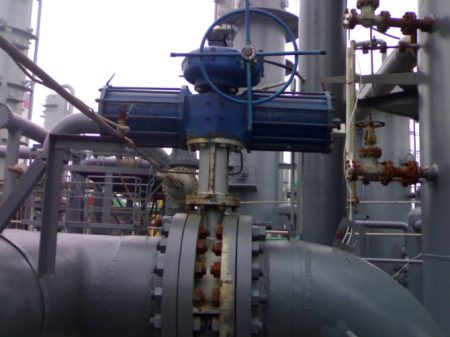
Flow coefficients (Cv) and pressure drop information
Flow coefficients (Cv) and pressure drop information are essential factors to consider when selecting a butterfly valve for a fluid or gas flow system. The Cv value represents the valve’s capacity to pass fluid through it, with higher values indicating greater flow capacity. This information is crucial in determining the valve’s efficiency in controlling flow rates and how well it will perform in specific applications that require rapid or precise adjustments to flow conditions. Pressure drop refers to the difference in pressure between the inlet and outlet of the valve when fluid or gas passes through it. This parameter has a direct impact on the overall efficiency of the system, as excessive pressure drops can lead to increased energy consumption, reduced flow rates, and diminished system performance. By carefully evaluating flow coefficients and pressure drop information, engineers and technicians can select the most suitable butterfly valve for their application, ensuring optimal flow control, system efficiency, and performance within the fluid or gas flow system.
Leakage rates and allowable leakage class
Leakage rates and allowable leakage class are critical factors to consider when selecting a butterfly valve for a fluid or gas flow system. Leakage rate refers to the amount of fluid or gas that escapes through the valve when it is in the closed position, while the allowable leakage class specifies the maximum permissible leakage for a particular valve design. Different applications have varying leakage tolerances, depending on factors such as the type of media, environmental concerns, and safety requirements. Ensuring that the selected valve meets the appropriate leakage class is vital for maintaining system integrity, preventing potential contamination, and adhering to safety standards. By carefully evaluating leakage rates and selecting a valve with a suitable leakage class, engineers and technicians can optimize the performance, reliability, and safety of their fluid or gas flow systems, ultimately contributing to the overall efficiency and effectiveness of the application.
Standards and Certifications
Standards and certifications play a crucial role in ensuring the quality, performance, and safety of butterfly valves used within fluid or gas flow systems. These guidelines and approvals, established by various industry organizations and regulatory bodies, provide a benchmark for valve design, manufacturing, testing, and performance, ensuring that products meet the necessary requirements for specific applications and industries.
Some common standards and certifications applicable to butterfly valves include ANSI (American National Standards Institute), API (American Petroleum Institute), ASME (American Society of Mechanical Engineers), ISO (International Organization for Standardization), and CE (Conformité Européenne). These organizations have established guidelines covering various aspects of valve design and performance, such as pressure ratings, temperature limits, material compatibility, leakage class, and flow coefficients, among others.For example, ANSI/ASME B16.34 outlines the requirements for pressure-temperature ratings, dimensions, and materials for various types of valves, while API 609 covers the design, materials, and testing of butterfly valves used in petroleum, petrochemical, and allied industries. Additionally, ISO 5208 specifies the acceptable leakage rates for different leakage classes, ensuring that valves meet the appropriate performance criteria for their intended applications.
Compliance with these standards and certifications not only demonstrates a commitment to quality and performance but also helps to ensure that butterfly valves are suitable for their intended applications and can effectively integrate within fluid or gas flow systems. In many cases, adherence to industry standards and certifications is a legal or contractual requirement, making it essential for manufacturers and suppliers to maintain compliance with these guidelines.By selecting butterfly valves that meet the relevant standards and certifications, engineers and technicians can have confidence in the quality, performance, and reliability of the products they choose, ultimately contributing to the overall success and efficiency of their fluid or gas flow systems.
Applicable industry standards (e.g., API, ASME, ISO)
Applicable industry standards, such as API (American Petroleum Institute), ASME (American Society of Mechanical Engineers), and ISO (International Organization for Standardization), play a pivotal role in ensuring the quality, performance, and safety of butterfly valves within fluid or gas flow systems. These organizations establish guidelines and requirements that cover various aspects of valve design, manufacturing, testing, and performance, setting benchmarks for products to meet the necessary criteria specific to their applications and industries. Compliance with these industry standards helps guarantee that butterfly valves are suitable for their intended use, effectively integrating into fluid or gas flow systems, and adhering to safety and performance regulations. By selecting butterfly valves that meet relevant industry standards, engineers and technicians can have confidence in the products’ quality, reliability, and performance, ultimately contributing to the overall success and efficiency of their fluid or gas flow systems.
Certifications and compliance requirements for specific applications (e.g., NSF/ANSI 61, ATEX)
Certifications and compliance requirements for specific applications, such as NSF/ANSI 61 (National Sanitation Foundation/American National Standards Institute) and ATEX (Atmosphères Explosibles), play a vital role in ensuring the safety, quality, and performance of butterfly valves within specialized fluid or gas flow systems. NSF/ANSI 61 certification, for example, focuses on products that come into contact with drinking water, setting stringent standards to prevent contaminants from leaching into the water supply. Compliance with this standard is crucial for butterfly valves used in potable water applications, ensuring the safety and health of consumers. Similarly, ATEX certification relates to equipment used in potentially explosive atmospheres, requiring manufacturers to adhere to strict guidelines to minimize the risk of ignition and ensure the safety of personnel and facilities. By selecting butterfly valves that meet the necessary certifications and compliance requirements for their specific applications, engineers and technicians can ensure the products’ suitability, reliability, and safety, ultimately contributing to the overall success and efficiency of their fluid or gas flow systems.
Installation and Maintenance
Installation and maintenance are crucial aspects of ensuring the optimal performance, efficiency, and longevity of butterfly valves within fluid or gas flow systems. Proper installation is vital to prevent potential issues such as leakage, misalignment, or damage to the valve components. To achieve this, technicians must follow the manufacturer’s guidelines, which typically include recommendations on valve orientation, flange compatibility, gasket selection, fastener tightening procedures, and torque requirements. Moreover, ensuring that the valve is compatible with the system’s pressure rating, temperature range, and media type is essential to avoid compromising the valve’s performance or integrity.
Maintenance plays a significant role in preserving the functionality and reliability of butterfly valves over time. Regular inspections and preventive maintenance practices help identify and address potential issues before they escalate into more significant problems or cause system downtime. Key aspects of butterfly valve maintenance include checking for signs of wear or damage to valve components, monitoring for leaks, verifying proper operation of the actuator and related accessories, and lubricating moving parts as required. Additionally, periodic testing of the valve’s sealing capability and actuator performance can help detect any deviations from the expected performance criteria.
In some cases, maintenance may involve the replacement of worn or damaged components, such as the valve disc, seat, or stem seals. Performing these repairs promptly and using genuine replacement parts can help maintain the valve’s performance and extend its service life. By diligently attending to installation and maintenance requirements, engineers and technicians can ensure that butterfly valves operate effectively and efficiently within fluid or gas flow systems, contributing to the overall success and reliability of the application.
Guidelines for proper installation and alignment
Guidelines for proper installation and alignment are essential to ensure the optimal performance, efficiency, and longevity of butterfly valves within fluid or gas flow systems. Adhering to the manufacturer’s recommendations is crucial to avoid potential issues such as leakage, misalignment, or damage to the valve components. Proper installation typically involves verifying compatibility with the system’s pressure rating, temperature range, and media type, as well as ensuring correct valve orientation and flange compatibility. Additionally, it is important to select the appropriate gasket material and follow the recommended fastener tightening procedures and torque requirements to create a secure seal. By diligently following guidelines for proper installation and alignment, engineers and technicians can maximize the performance and reliability of butterfly valves, ultimately contributing to the overall success and efficiency of the fluid or gas flow system.
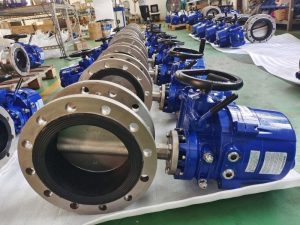
Recommended maintenance practices and intervals
Recommended maintenance practices and intervals are essential for preserving the functionality, reliability, and longevity of butterfly valves within fluid or gas flow systems. By adhering to manufacturer guidelines and industry best practices, potential issues can be identified and addressed before they escalate into more significant problems or cause system downtime. Regular inspections and preventive maintenance should be scheduled based on factors such as the valve’s operating conditions, media type, and application requirements. Key aspects of butterfly valve maintenance include checking for signs of wear or damage to valve components, monitoring for leaks, verifying proper operation of the actuator and related accessories, and lubricating moving parts as required. Periodic testing of the valve’s sealing capability and actuator performance is also recommended to detect any deviations from the expected performance criteria. By diligently following recommended maintenance practices and intervals, engineers and technicians can ensure that butterfly valves operate effectively and efficiently within fluid or gas flow systems, contributing to the overall success and reliability of the application.
Conclusion
In conclusion, a butterfly valve specification sheet is an essential document that provides a comprehensive overview of the valve’s features, capabilities, and requirements. This information enables engineers, technicians, and procurement professionals to select the most suitable butterfly valves for their fluid or gas flow systems, ensuring optimal performance, efficiency, and longevity. Here are some key elements that should be included in a butterfly valve specification sheet:
- Valve Type and Design: Clearly outline the type of butterfly valve (e.g., concentric, double-offset, triple-offset) and its design features, such as the disc and seat materials, stem design, and sealing mechanism. This information is crucial for determining the valve’s compatibility with specific applications and operating conditions.
- Size and Pressure Rating: Specify the valve size (nominal diameter) and pressure rating, typically expressed as Class or PN (Pressure Nominal). These parameters are essential for ensuring that the selected valve can handle the system’s flow rate and pressure requirements.
- Temperature Range: Provide the operating temperature range for the valve, taking into account factors such as the media type, ambient conditions, and process requirements. This information helps ensure that the valve can withstand the system’s thermal demands without compromising its performance or integrity.
- Material Compatibility: Include details about the materials used for the valve’s components, such as the body, disc, seat, and stem. Material compatibility is vital for preventing corrosion, erosion, or chemical reactions that could impact the valve’s performance or service life.
- Actuation Options: Specify the available actuation options for the butterfly valve, such as manual (lever or gear-operated), pneumatic, electric, or hydraulic actuators. This information allows users to select the most appropriate actuation method based on their system requirements and preferences.
- Standards and Certifications: List the applicable industry standards (e.g., API, ASME, ISO) and certifications (e.g., NSF/ANSI 61, ATEX) that the butterfly valve complies with. Compliance with these guidelines ensures that the valve meets the quality, performance, and safety requirements for specific applications and industries.
- Installation and Maintenance Guidelines: Provide recommendations for proper installation, alignment, and maintenance practices to ensure optimal valve performance, efficiency, and longevity. This information enables users to follow best practices and avoid potential issues related to valve operation or system integration.
- Performance Data: Include relevant performance data, such as flow coefficients (Cv), leakage rates, and torque requirements. This information helps users evaluate the valve’s performance characteristics and make informed decisions based on their system demands.
By including these key elements in a butterfly valve specification sheet, manufacturers can provide comprehensive and accurate information to potential users, facilitating informed decision-making and ensuring the successful integration of butterfly valves within fluid or gas flow systems. Ultimately, a well-prepared specification sheet contributes to the overall success and efficiency of the application, promoting reliable and effective valve performance for years to come.
Recap of the importance of a comprehensive butterfly valve specification sheet
In recap, a comprehensive butterfly valve specification sheet is of paramount importance as it serves as the foundation for informed decision-making and successful integration of butterfly valves within fluid or gas flow systems. By providing detailed information on valve type, design, size, pressure rating, temperature range, material compatibility, actuation options, industry standards, certifications, installation, maintenance guidelines, and performance data, a well-prepared specification sheet enables engineers, technicians, and procurement professionals to select the most suitable butterfly valves for their specific applications and operating conditions. Ultimately, a thorough and accurate specification sheet contributes to optimal valve performance, efficiency, and longevity, ensuring the overall success and reliability of the fluid or gas flow system.
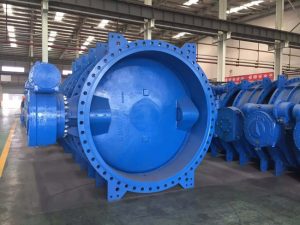
Tips for working with valve suppliers to ensure accurate and complete specification
When working with valve suppliers, it is essential to establish clear communication and collaboration to ensure accurate and complete specification of butterfly valves for your fluid or gas flow systems. Begin by sharing detailed information about your application requirements, including factors such as media type, flow rate, operating pressure, temperature range, and any industry-specific standards or certifications needed. Engage in open dialogue with the supplier to discuss the most suitable valve types, designs, and materials that meet your system’s needs. Request comprehensive specification sheets and, if possible, arrange for product demonstrations or samples to evaluate the valve’s performance and compatibility with your system. Don’t hesitate to ask questions and seek clarification on any aspects of the valve’s features or capabilities. By maintaining an active and transparent relationship with your valve supplier, you can ensure that the butterfly valves selected are accurately specified, ultimately contributing to the efficiency, reliability, and success of your fluid or gas flow system.



